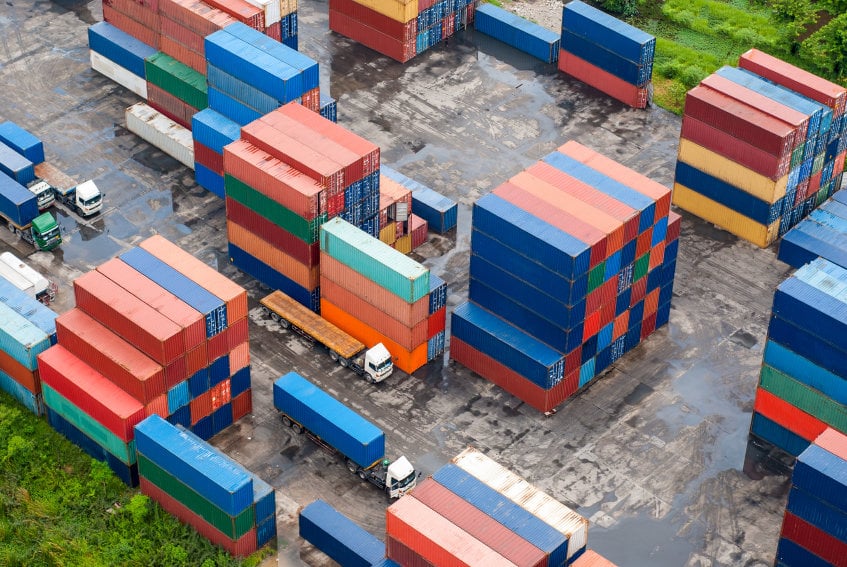They hold just about everything we need from jeans to laptops. They are made of steel, aluminum, paper and glass. They protect and preserve. They are underground and aboveground and they journey around the world. They revolutionized civilization.
Yes, I am talking about cargo containers
In China, chairs, doors and light bulbs being manufactured by the millions. But how do these goods get to store around the corner from you?
The container’s journey from source to store is as a long one. A container will make about 120 trips from port to port in its approximate 12 year life. The container is designed to hold up to 20 tons of goods (sometimes more) and they can be carried by three different modes of transportation. Road, rail and sea.
Without this intermodal system capability, international commerce would be almost impossible. The key to the system is the container itself. The uniform lengths are 20 ,40 and 45 feet. Most containers today are of the 40 foot variety. Each container is also manufactured in such a way they are easily interlocked. When containers loaded onto vessels they are connected to one another using a device called a “twistlock”. There is also rod lashing, which is essentially rods lashed to the sides of the container to make them more sturdy
Before containerization, cargo handling took much more time and muscle. Until 1955, when a trucking entrepreneur from North Caroline named Malcolm Mclean bought a steamship company and changed the shipping industry for good. He removed the wheels from his truck and stacked them on the ship’s decks. His prototype container ship contanied 58 trailers on its deck and began a journey from port of NJ to Texas. His company became Sealand services, an international shipping company.
The traditional way of loading and unloading freight system was slow and expensive. Containerization sparked the waterfront metamorphosis. Crane operators eventually replaced the gangs of shore men, In order to move the heavy steel containers, the portainer was developed. It required only one driver and a cab above the pier to move cargo from ship to shore. As more shipping companies began using more containers the standardization and interchangeability became crucial to the success of the intermodal system. All of the transport industries had to adopt such as trucks and rail systems
By 2005 almost 90% of all cargo moved by standardized containers, but as freight containers came to facilitate global trade, the world became a more dangerous place. Unfortunately, aside from its original use, in the past cargo containers were used for drug trafficking and other illegal activities. To prevent this, US customs had to come up with some ideas, such as VACIS exams or physically inspecting cargo containers before letting them pass from our borders. So, whenever your container is flagged for an exam don’t get upset. US customs is taking measures to protect you and your business.
Since 1955 freight transportation has changed tremendously. Now we are able to move any type of cargo from anywhere in the world to any destination faster and more economical.
- 55shares
- 52Facebook




